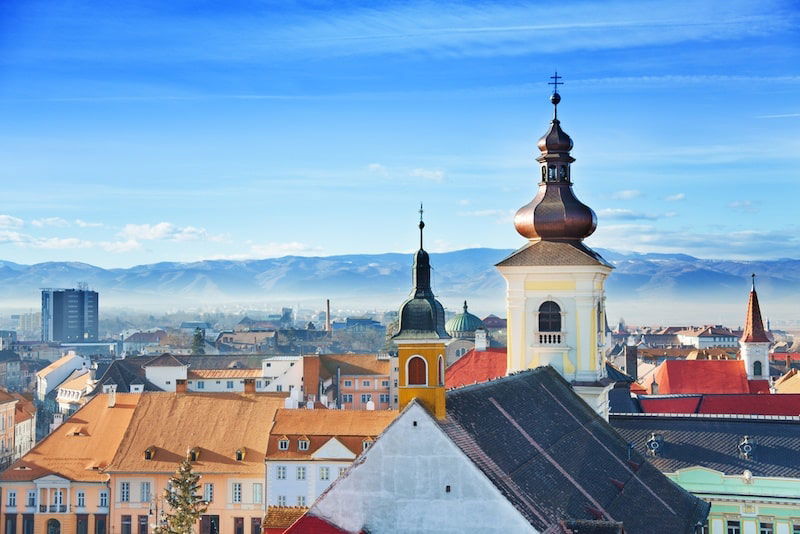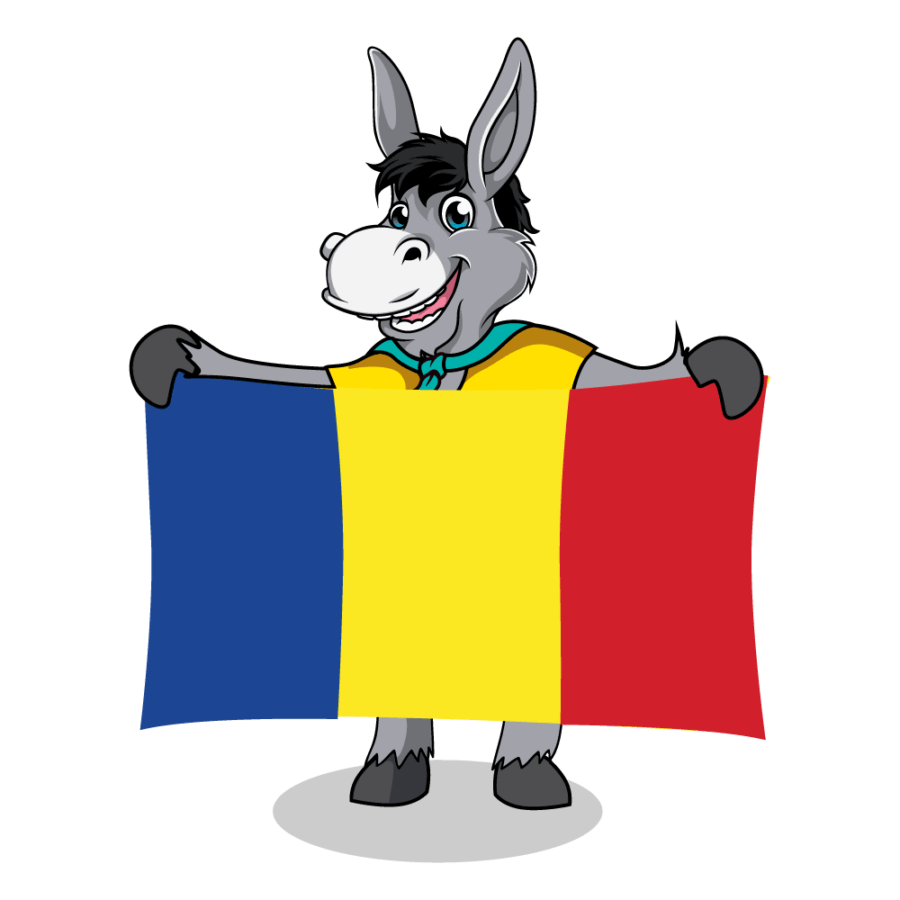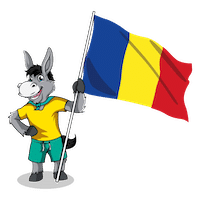Is Transylvania Real? Watching cartoons as a child, you must have heard about Transylvania, the land of Count Dracula. Let’s find out if it’s real or fiction…

Skip Ahead To My Advice Here!
Territory Of Transylvania, Romania
If you watched cartoons as a child, you must have heard about Transylvania, the land of Count Dracula. In this place, medieval peasants scour in fear at the mere mention of the count’s name.
But if you imagine that this place does not exist or is a pilgrimage hot spot for Twilight fans, you need to think again. Ok, the Twilight fans thing is real, but there is so much more to this place than the myth of the bloody vampire and foggy forests; you are in for a real treat and experience.
The Transylvania Dracula Myth

Let’s start with what you may probably already know about the place.
- The fact that it is the place where a blood-thirsty Medieval ruler, known under the name of Vlad the Impaler, became the inspiration for Bram Stoker’s Dracula book.
- The book inspired various movies and characters and has created a bleak image of Transylvania as a region or country, as some have come to think of it.
But let us put some things straight about the real Transylvania…
There Really Was A Vlad The Impaler
Vlad the Impaler, or Vlad Țepeș, went down in international history for his preferred method of punishing his enemies: that of impaling people on a very long and pointy stick. This made for a slow and excruciatingly painful death.
And this is about the only intersection between history and reality. In fact, Vlad the Impaler is known among Romanians to have impaled the Ottoman invaders – Romania has always been in the way of the Ottoman Empire expansion toward the west of Europe – and the nobles who did not pay their dues – but who exploited the peasants for their gain.
The Character In Bram Stoker’s Book
As compelling as Bram Stoker’s description of Transylvania and the Bloody Prince was, it is pretty far from the truth.
For starters, Stoker never even traveled to the area. His descriptions were based on one person’s travel notes, which he found in the library. Imagine establishing your full understanding of a place on just one person’s opinions. Would you go to a restaurant that has only one review on Tripadvisor? We think not!
Regarding the thirst for blood and blood-drinking from the necks of victims, here Stoker combined the stories about Vlad the Impaler with stories about a Hungarian noblewoman, said to have liked to bathe in virgin blood to maintain her youth.
Transylvania & Dracula Tourism

Many people travel worldwide only to discover that things are not as they believed they were. They come to Transylvania expecting a gloomy place, wanting to see Vlad and Dracula’s castle’s birthplace.
In reality, Transylvania is a very green and lively place; Vlad’s birthplace’s location is unknown, so don’t buy into those tours. Bran Castle is, in fact, a military location that has, over time, changed owners several times. It actually became one of Queen Mary’s favorite castles.
Its medieval décor gets people thinking about the time Vlad lived, but there is no evidence he was ever there. The castle was featured in several movies and music videos, insisting on spreading the idea of Dracula’s castle.
Still, if you go on Halloween, the locals will play along and let you have your fun. However, come with an open mind when exploring the diverse culture and history of Transylvania and be willing to shake off common misconceptions about vampires.
Brands We Use And Trust
The Real Transylvania

The name stands for “the land among the forests,” which is the fairest description of the place.
Outdoor lovers will have their fair share of trails, hikes, mountain resorts, picturesque villages, and chic little medieval cities you need to visit. Additionally, this is one of the absolute best places to visit in the Balkans in spring. Here are just some of the main attractions in Transylvania. Provided that you get this whole Dracula thing out of your system beforehand, you are ready for the real thing.
One Region, Eight Counties

Romania is a vast country, so you will get to say you’ve visited a Transylvanian city if you go to any of the following counties:
You can opt for accommodations in any of these cities, visit ethnographic museums, attend fairs, try out all the best restaurants, and enjoy the local architecture.
Tourism has soared in the area, and for good reason. Cluj-Napoca is the biggest city in the region and a Western Romanian urban pearl. Sibiu and Brasov are other main attractions, probably more popular for some because they are closer to the capital, Bucharest, and many one-day tours are organized for the area.
Transylvanian Landscapes

We kept bragging about the lush forests in the Carpathian Mountains, where you can easily get lost. Although many hiking trails are laid out for experienced and non-experienced mountain goers, it is best to ask before setting out.
Transylvania is home to a large population of brown bears who regularly visit populated areas. This means that if you find accommodation on the outskirts of Brasov city, for example, you might easily spot a little Yogi and his Boo-Boo on the streets. Locals usually call the proper authorities to chase the animals back into the woods. But do expect these sightings and try to avoid wandering into deep trails without checking with someone first.
Balea LakeThe place is packed with virgin forests, glacier lakes, caves, gorges, and natural reserves. Some of the most impressive sites you must not miss are Saint Anna Glacier Lake and Balea Lake. If you travel to Romania in winter and plan on seeing Balea Lake, situated at a very high altitude, you can even spend a night at the ice hotel if you are into that sort of thing.
Talk about the land before time! Among the most impressive caves, you can explore the Bears’ Cave – a place where the bones of 140 cave bears have been found, a species that has been extinct for about 27000 years. Scarisoara Cave is another great place for explorers to visit. It hosts Romania’s biggest glacier, which was formed over 3500 years ago.
Fortresses And Castles In Transylvania

Although many tourists flock with the expressed intention of seeing Dracula’s castle, there are many other castles and fortresses to visit in Transylvania. We have already mentioned Bran Castle, and we will not repeat that.
Rasnov Fortress is only 20 minutes away and is a fascinating construction. It dates back to the 13th century, served a military purpose, and is now a medieval art museum. You can even try shooting with an old bow, arrow, or ax throwing.
The city of Brasov was built around a medieval fortress. You can visit the tallest lookout point, then take a walk through many of the old streets packed with history. Here is a great place to find rustic or five-star accommodations. There are towers dedicated to each city guild to visit, the famous Black Church, museums, and many more exciting places to visit. Poiana Brasov is the nearest mountain resort and renowned ski destination.
Sibiu city is built around the medieval fortress, just like Brasov’s case. There are just as many things to see, but we will add the incredible Astra Museum, an outdoor museum of traditional houses from the Transylvania region.

In Mures County, you will find Sighisoara, the oldest inhabited medieval citadel. In Alba Iulia, the capital of Alba County, you will find the Alba Carolina Roman fortification, an exceptionally well-preserved architectural gem you will love to discover.
Poenari Fortress, located on the phenomenal Transfagarasan mountain road, is perched at a high altitude, and to reach it, you need to climb up 1480 stairs. Warning: As you get closer to the fortress, you can see two impaled dummies. This image is not for the faint of heart, and you cannot really avoid seeing them. Take care if you travel with children or people who are more sensitive. Do not set out for the fortress if you do not have time to get back before sunset because the trip through the forest and down the stairs will be tricky.
Hunedoara is home to what some think is the most haunted castle in the world—the Corvin Castle. The place is remarkable in architecture, and so filled with history and gruesome stories that it is no wonder that people expect something to lurk in the shadows. We suggest you make up your mind about it. Don’t visit it after sunset; steer clear of the torture room and the dungeon if you are not into visual representations of pain and terror.
The nice thing about visiting castles in Transylvania is that there is no “one size fits all” type of construction. There are all different and exciting to explore. Some are of Roman origin, others have Saxon or Hungarian architecture, while some were monasteries and defense fortifications. There is a lot to see.
Animals And Wild Animals In Transylvania
Apart from bears, Transylvania is a place where many other wild animals, like wolves and lynx cats, still roam free. You can spot them on rugged trails, although this is ill-advised, or you can visit some of the many reservations and unique observatory parks. Look for such places in any of the counties mentioned above.
A special treat is reserved for horseback riding. There are several locations where you can practice your favorite sport. Sambata de Jos in Brasov County is one of these most famous locations. However, be warned. The Lipitani horse breed is among the tallest. You might expect something taller than a pony and end up having to mount a huge animal. If riding is not your thing, but you still love horses, you can take a ride in a horse-drawn carriage.
Transylvania And Most Exciting Road Trips

If you enjoy driving through some of the most beautiful scenery, you will enjoy visiting Transylvania. You have not one but two highway experiences: Transfagarasan and Transalpina.
Transfagarasan was also featured in a Top Gear episode and is considered one of the most spectacular in the world. As the name suggests, it winds through the Fagaras mountains at an altitude of 2134 meters. It starts in Brasov and takes you all the way up to Balea Lake. As you descend, you reach Sibiu, a beautiful area of Saxon villages.
Transalpina starts in Transylvania and ends in the Oltenia region. It is an even more dangerous road, one of the most dangerous in the world. It is known as the King’s Road; it is closed most of the year because there are no protective walls, and driving is dangerous. The peak of the population of Transylvania is in the summer, where they enjoy various festivals celebrating its rich history. is the best time to have this experience.
Transylvania Eco-Tourism
An alternative to finding boarding at hotels in larger cities is to find a cozy B&B in one of the lovely villages in Transylvania. A stay in these areas really opens your eyes to the local history and culture. For instance, around Sibiu and Brasov, many Saxon villages were built by merchants who had settled here in Medieval times and contributed to fighting off the Turks.
Picnics and brunches are organized in Sibiu with local food. They are held every Sunday, outdoors if the weather permits, combining local cuisine with discovering a beautiful location.
Dracula aside, Transylvania is a beautiful place to visit, packed with unique history and culture, and a real gem for nature lovers.


The title of this post: what everyone is secretly asking themselves lol
Such a nice post.
Hello from The Land Beyond the Forests :) A short comment (then I’ll read thoroughly the article). The horse riding place mentioned is in Sambata de Jos (not ‘de Sus’ meaning the upper, but ‘de Jos’ the lower Sambata, however, very close one to another) and it is one of the 12 Romanian national studfarms. They breed Lipizzaner (Lipitan in Romanian) horses, which is not a Romanian breed but one of the main horse breeds created by the Austro-Hungarian empire. Stallions (the breeding sires) of the same horse breed you can see performing in the Spanish Riding Schol in Viena or you can visit the breeding farm Piber (Austria) to see the rest of the breeding stock. Congratulations for the article! I didn’t want to be critical, but things have to be gotten right (horse-people are oversensitive).
Thanks Eva, I will make that correction now and let Gabi know.
i break the curse over transilvania adn declaire that transilvania is the Kingdom of God and not dracul a land.
If, as the article states, we all grew up with cartoons depicting a land where peasants “scour in fear,” then at least they had clean pots.